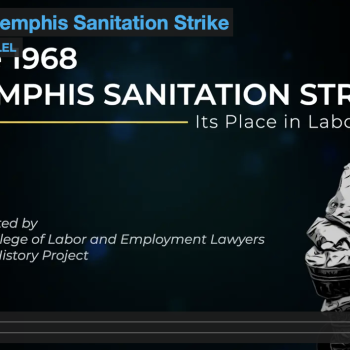We are culturally quite adapted to the concept of “membership.” Probably most of us have memberships in many things. You may be a member of the Rotary, or Planet Fitness, the AARP, a political party, or a monthly club for the delivery of chocolates.
Protestant churches, particularly in North America, have conformed their understanding of membership to these popular “voluntary association” patterns. For example, our church has an official definition of a member. You become a member either by baptism, affirmation of baptism, or transfer of membership. You maintain your membership by communing annually and giving “of note,” which means some financial offering you give during the year needs to have your name attached to it.
However, I believe that if these definitions of “membership” ever sufficed, they certainly don’t suffice now in the 21st century church during a pandemic.I see signs every single day of the way people are faithfully participating as “members” in the church that are simultaneously more creative than the baseline voluntary membership models of the 20th century, and also more in line, ultimately, with a Christian or biblical understanding of “membership.”
So let’s start briefly with the theological perspective. For Christian theology, membership is actually membership in the body of Christ. You are a member of the church in the same way any of your body parts are “members” of your body.
The locus classicus for this perspective is 1 Corinthians 12:12-14:
Just as a body, though one, has many parts, but all its many parts form one body,so it is with Christ. For we were all baptized by one Spirit so as to form one body—whether Jews or Gentiles, slave or free—and we were all given the one Spirit to drink. Even so the body is not made up of one part but of many.
So it is baptism that makes us part of this body. And it is the Spirit that sustains us in this body.
This is not just an abstract concept, a philosophical construction about community and bodies. It literally means something, which we can see most clearly in two quotes, the first from Pope Francis on the World Day of the Poor:
“If we truly wish to encounter Christ, we have to touch his body in the suffering bodies of the poor, as a response to the sacramental communion bestowed in the Eucharist. “The Body of Christ, broken in the sacred liturgy, can be seen, through charity and sharing, in the faces and persons of the most vulnerable of our brothers and sisters.”
The second from Paul’s letter to the Colossians:
“I am now rejoicing in my sufferings for your sake, and in my flesh I am completing what is lacking in Christ’s afflictions for the sake of his body, that is, the church.”
In both of these quotes, we see that “membership” entails suffering with, identification with… in the first instance with the poor, in the second with Christ’s own afflictions.
These two are, in Christian theology, the same thing.
The poor… and Christ.
And membership in the church is defined as suffering with and touching the bodies of the poor, and completing what is lacking in Christ’s afflictions.
If we take this theological baseline as our definition of church membership, we can see immediately how far off the constitutional definition of membership is from the theological one.
The theological one is so much more open, and also more challenging. It is open, in the sense that anyone who is “involved” is automatically considered a member.
Membership is as membership does, you might say. In our church in these last few years, we see this phenomenon in a major way, as our church is so porously connected to the community and other organizations in ways that allow us to all “do” together, regardless of outdated notions of “membership.”
It is more challenging, inasmuch as it asks of us not participation in a ritual like receiving communion in a worship service or dropping cash in an envelope, but truly sacrificing for the sake of others.
Membership functions not as a protective barrier, helping us clearly distinguish who is and who isn’t “in.” In Christian theology, you can’t even really get to this concept, and any questions about whether or not we are focusing enough “inside” or “outside” the church are profoundly misguided.
Instead, membership functions as a shared vulnerability. We’re in this together. Inasmuch as we are “members” of the church, we are poured out for others, defining our membership not by how long we’ve belonged to the church but rather how we are suffering for and with the poor of the world.
At the top of this e-mail, I put two test cases of some ways we are seeing “membership” functioning differently than in the past. In the first photo, you see someone who does not even consider themselves very religious raising funds for our church as part of her birthday celebrations.
It’s fascinating to me that Johanna has done this, because this is a more overt social media witness than many of our “members” have done on their own walls for the church. I think a lot of our longtime members might be inspired by her to go and do likewise.
In the second photo, you see new names of people checking in and saying hi during our livestream of worship. These folks could never have been members of the church with the traditional membership rules, requiring as it does reception of communion in place.
But with the shift to worship in this format, we are seeing participation take place not just in new ways here in community, but also spread out all over the country and globe.
We see so many people inspired to care for and advocate for needs in our community.
We are a church known not by a sense of old-school “membership,” a closed society like the Elks that you join in order to use the swimming pool, but known instead by the ways we suffer with and for our neighbors in their need.
We are defined as members not by who is in the building with the doors shut, but by how open we are to the world.
That, or something like it, is how I think of membership, and I’m so thankful for the opportunity to be poured out together with you all completing the afflictions of Christ in a world sorely in need.
















